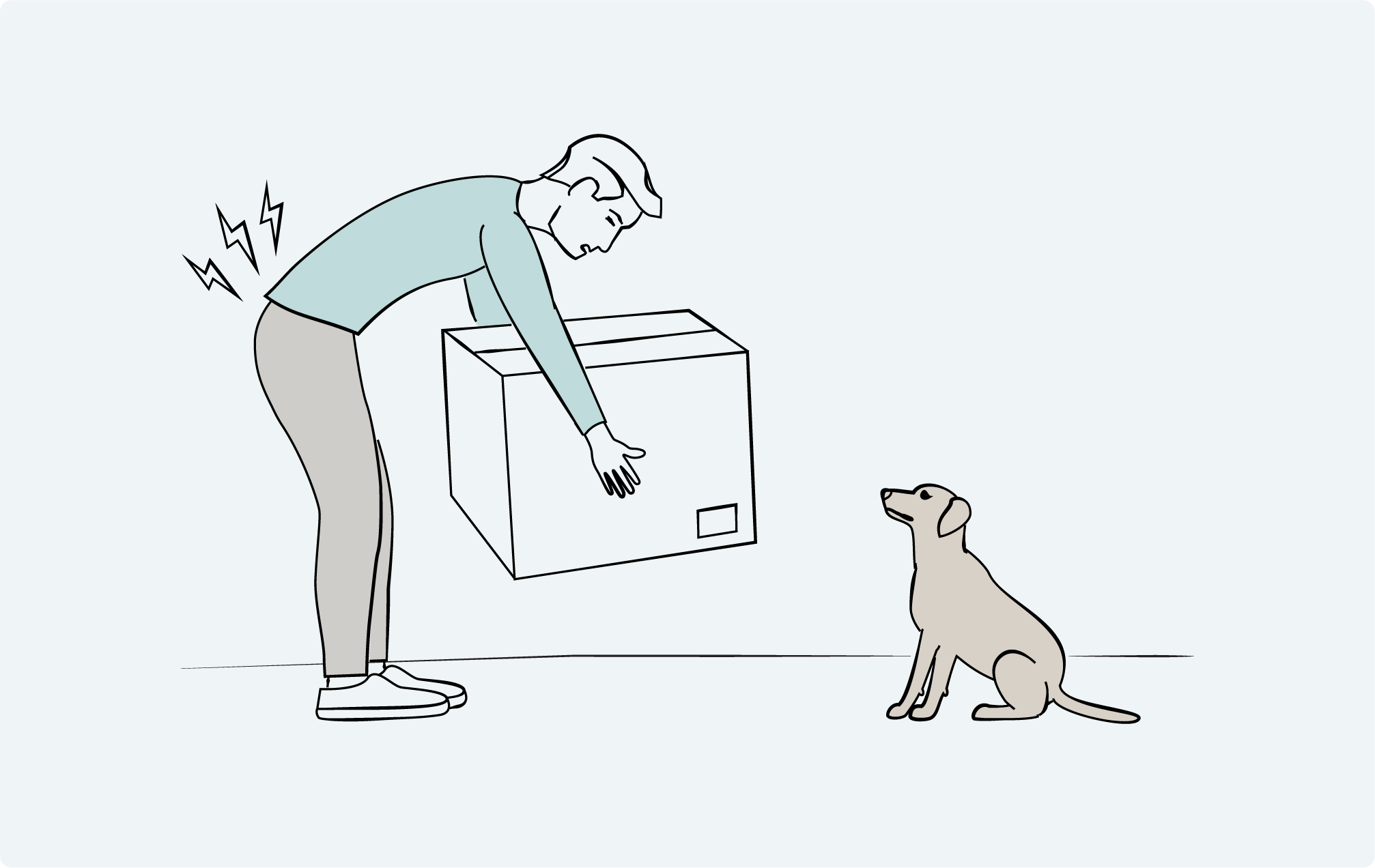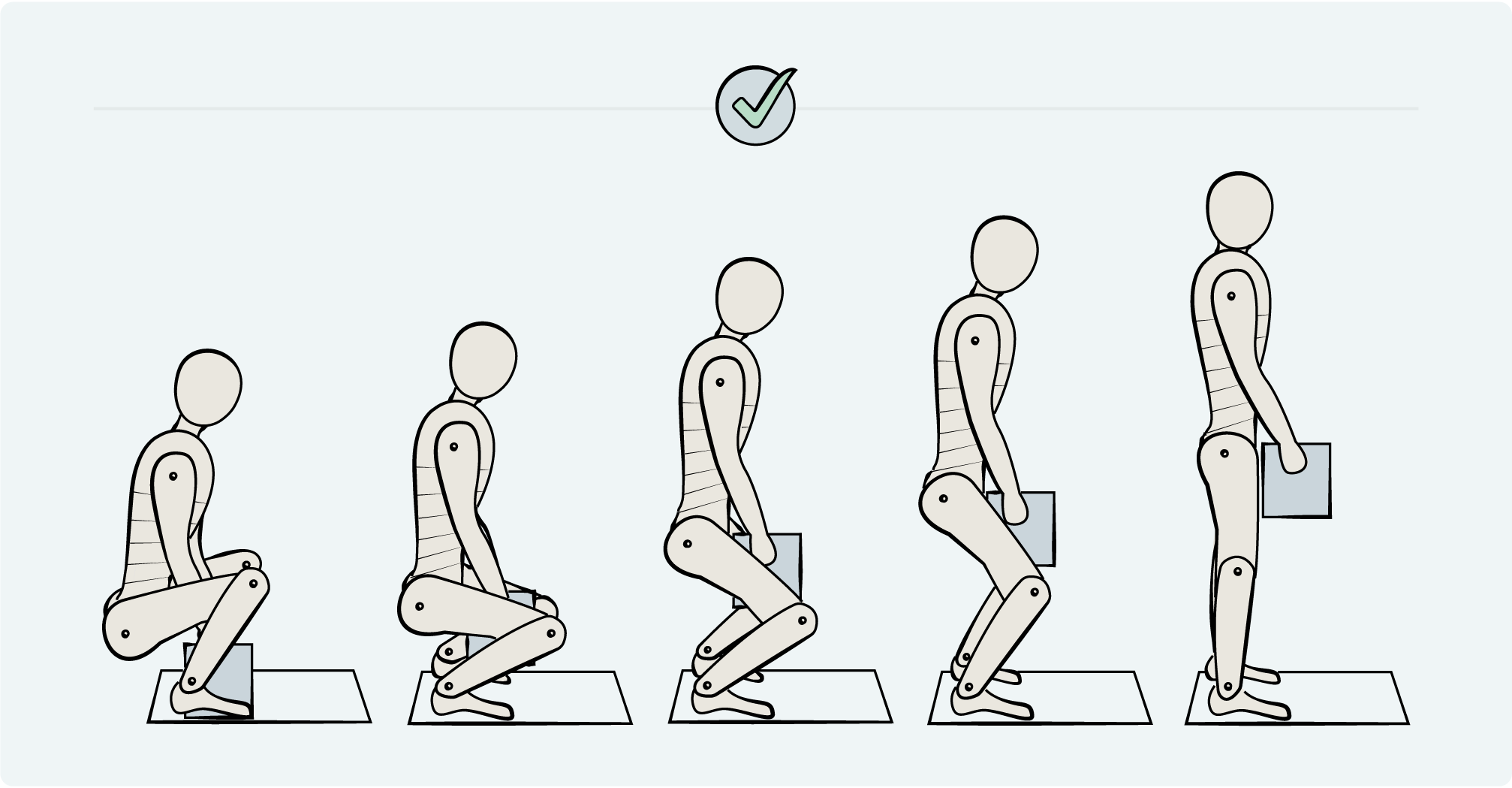How can you keep your lower back safe while lifting heavy objects?
The lower back is a very common site of injury. Lifting a heavy object – whether it’s a box, a piece of furniture, or a set of weights at the gym – can put the lower back at significant risk if done improperly. A little bit of knowledge about how to position the body safely while lifting can help to prevent the pain and dysfunction of an injured lower back. How can you stay safe while lifting?
How can lifting damage the lower back?
The main risk of improper lifting is that it can cause a herniation of a disc in the lumbar spine (the lower back). Lifting a heavy (or even a not-so-heavy) object with a rounded lower back puts a tremendous amount of force on these discs. In fact, bending at the waist to lift an object that weighs just 30 pounds can put more than 2000 pounds of compressive force on the lumbar discs!
With this amount of force, it’s very easy for a disc to become herniated. This means that the disc bulges outward. A herniated disc may cause pain and inflammation in the lower back, but it may also cause symptoms like tingling, pain, or numbness in the leg or foot, which result from nerve compression in the lower back.
How can you prevent herniated discs from lifting?
The most important piece of advice for low back safety is to maintain a neutral spine when lifting. Your low back naturally has a slight forward curve, and you should do your best to keep it that way during lifting.
Holding the object close to your body, and lifting with your legs, will put far less stress on your lumbar spine than bending at the waist to pick up the object. In part, this is due to leverage. An object held farther away from your body will put more force on your spine than the same object held close to you. Additionally, allowing the lower back to curve forward (which generally happens when bending at the waist) shifts most of the force of the object into the front part of the lumbar discs. This puts the discs at significant risk of herniation. Keeping the lumbar spine neutral helps to protect the discs.
To keep your lower back safe, follow this procedure as you lift:
Stand with a wide stance, then squat down near the object
As you prepare to lift the object, stand with your feet shoulder width apart and toes pointed slightly outward. This will position you for stability so that you can safely handle the object, and will also position your legs to be as powerful as possible so that they can do most of the lifting.
When you’re ready to lift, squat down near the object. NEVER bend over at the waist to pick up something heavy. Bend at the knees instead.
Hold the object close to your body, and tighten your core
As you grasp the object, hold it as close to your body as possible. This helps to keep the object stable, and also reduces the amount of force that it will apply to your body. Tighten your core (your abdominal muscles) a bit. This helps to brace your back and spread the load across different parts of your spine.
Take a moment to ensure that your spine is in a neutral position, with your low back curving slightly toward the front of your body, rather than rounded backward. (You don’t want to excessively arch your lower back, just ensure that the natural forward curve is present.) It helps to look straight ahead, rather than down at the object, so that you don’t reflexively curl your back over it.
Lift with your legs, not your back
Make sure that you have a secure grip on the object, so that it won’t drop or wobble. Next, straighten your legs to lift the object. You’ll notice that it’s mainly your leg muscles that do the work of lifting. The quadriceps (on the front of the thigh) and gluteus muscles (in the buttocks) generally provide most of the power, with your hamstrings (on the back of the thigh) and other leg muscles also contributing.
Your leg muscles are very powerful, and can lift more weight than your back muscles can. When you lift with your legs, you not only protect your low back, but you also give yourself the ability to lift heavier objects. The muscles of your arms and core will also be activated to some degree during lifting, for stability of your body and the object. However, it’s your leg muscles that will actually do most of the work.
Take care of your low back!
At her chiropractic office in Chester, NJ, Dr. Barnes has unfortunately seen many patients with herniated discs of the lumbar spine. Often, these patients were lifting an object when they became injured. In some cases, the object wasn’t even very heavy, but they were lifting it in an unsafe way.
Although chiropractic care can certainly help patients who have experienced a herniated disc, it’s much better to prevent problems than to treat them. Dr. Barnes considers it part of her mission to spread knowledge of how to lift safely, to help you protect your low back. We hope that these tips help you to stay pain-free for years to come.


